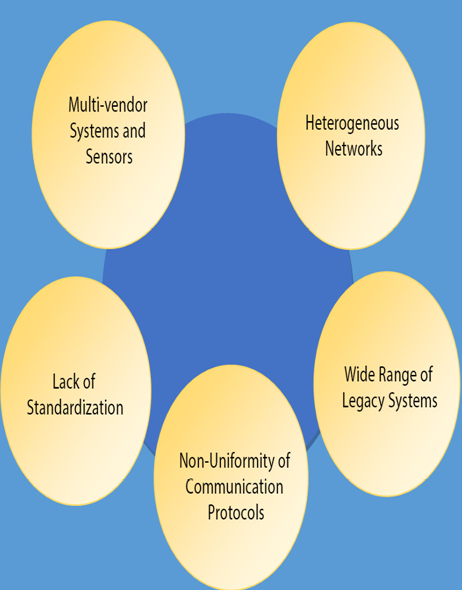There are six main interoperability patterns for IoT ecosystems, which are as follows:
Cross-Platform Access: Serving as the bedrock of an interoperable IoT system, this pattern aspires for a unified interface where applications or services can tap into resources from varying platforms. The challenge is in facilitating different platforms to communicate and discover necessary data coherently, irrespective of the origin.
Cross-Application Domain Access: Expanding upon the Cross-Platform Access pattern, this pattern empowers applications or services to harness data not just from disparate platforms but also from those serving diverse application sectors. At this juncture, semantic interoperability—ensuring consistent meaning and interpretation of data across systems—becomes paramount. To achieve this, shared information models are essential as they provide standardized structures ensuring that data retains its meaning across varied domains.
Platform Independence: Championing adaptability, this pattern emphasizes applications or services that function across a range of IoT platforms. Imagine a universal smart parking solution operating across different cities, each with its own platform but conveying parking availability seamlessly.
Platform-scale Independence: Tailored to buffer applications and services from discrepancies in platform sizes, this pattern guarantees a uniform interaction experience regardless of platform magnitude.
Higher-level Service Facades: This involves supplementary services that embellish the innate capabilities of the IoT platform. By standing as an intermediary layer, these services refine the foundational offerings, presenting enhanced value.
Platform-to-platform: Promoting integrative capabilities, this pattern equips pre-existing applications to draw from resources across multiple platforms, creating an illusion of them operating under a singular umbrella. This consolidated approach eases user interactions and enables platforms to augment their resource suite via collaborative endeavors.
With that, we have a greater understanding of the patterns involved and can move on to seeing the challenges of interoperability.
Challenges within interoperability
There are many challenges within interoperability. They mostly converge into five different areas. Let’s look at the five key challenges that are impeding the progression of interoperability within IoT and how they all fit into the big picture of the IoT solutions that we are developing, as depicted in Figure 8.2:

Figure 8.2 – The five key challenges of interoperability within IoT
The five key challenges can be defined as follows:
Multi-vendor systems and sensors: One of the biggest challenges of interoperability for IoT is the large number of different vendors and suppliers offering IoT devices and systems. This creates a scenario where different devices have different hardware and software specifications, making it difficult for them to communicate with each other.
Heterogeneous networks: Another challenge is the heterogeneous nature of IoT networks, where different devices use different communication technologies, such as Wi-Fi, Bluetooth, Zigbee, or cellular networks. This can lead to difficulties in establishing communication between devices, as they may not be compatible with each other.
Wide range of legacy systems: The presence of a wide range of legacy systems, such as building automation systems and industrial control systems (ICS), adds to the complexity of interoperability. These systems were not designed with IoT in mind and may use proprietary communication protocols or connectors, making it difficult to integrate them with newer IoT devices.
Non-uniformity of communication protocol: The non-uniformity of communication protocols used by different IoT devices is another major challenge. This can make it difficult for devices to communicate with each other, as they may use different protocols or different versions of the same protocol.
Lack of standardization: A lack of standardization in the IoT industry is a major challenge for interoperability. Without a common set of standards, it is difficult for devices from different vendors to communicate with each other, leading to fragmentation and complexity. Standardization efforts, such as the IoT Architecture Framework, are underway to address this issue.
With that understanding of the challenges, we can now take a look at the different types of interoperability.
Leave a Reply